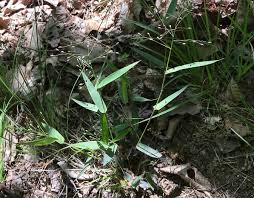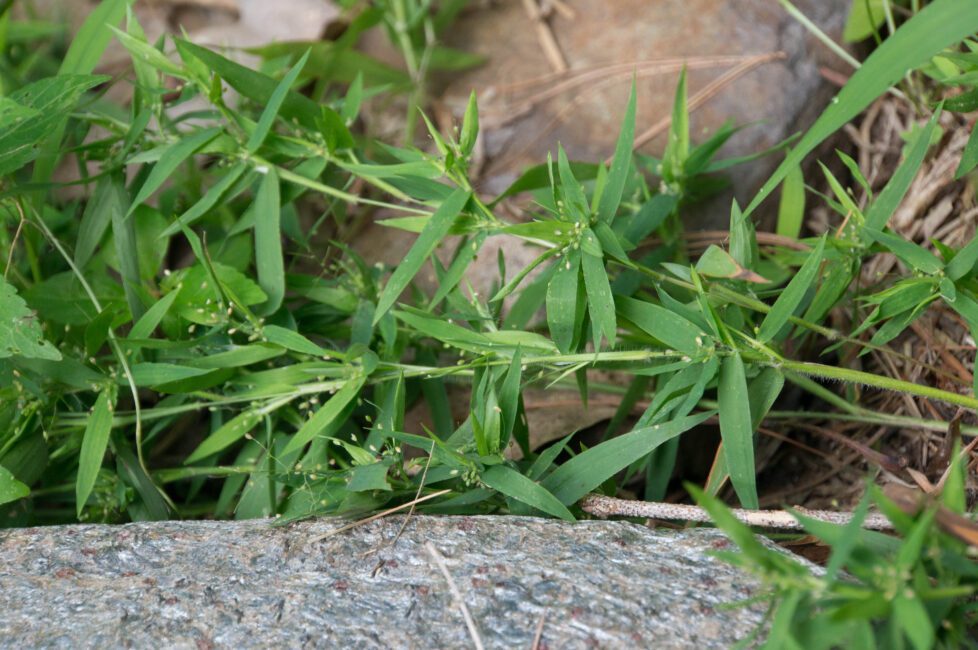Variable panicgrass (Dichanthelium commutatum) is a type of grass that grows in many places. It is quite interesting because it can look different in various areas. People who study plants, called botanists, find this grass fascinating.
In fields and meadows, Variable panicgrass stands tall with thin, green stems. Its leaves are slender and can be long or short. Some say it’s like nature’s artwork, as the grass varies its appearance based on where it decides to grow.
If you walk in a sunny field, you might spot Variable panicgrass with its delicate flowers swaying in the breeze. These flowers are small and often have a soft, pale color. People who enjoy nature often appreciate the beauty this grass adds to landscapes.
What’s intriguing is how Variable panicgrass adapts to its surroundings. In dry places, it manages to survive with less water, showing its resilience. This grass has a talent for adjusting to different conditions, making it quite versatile.
Farmers sometimes notice Variable panicgrass in their fields, and while it might not be the main crop, its presence contributes to the biodiversity of the area. This grass provides a home for insects and other small creatures, creating a balanced ecosystem.
Despite its unassuming appearance, Variable panicgrass plays a crucial role in nature. It quietly contributes to the diversity of plant life, supporting various insects and animals. Next time you stroll through a meadow, take a moment to appreciate the simplicity and adaptability of Variable panicgrass.
Read Also: How to Grow and Care for Lemons
How To Grow Variable Panicgrass (Dichanthelium commutatum)

Growing Variable panicgrass (Dichanthelium commutatum) can be a rewarding experience. Follow these simple steps to cultivate this adaptable grass:
1. Choose the Right Location: Select a sunny or partially shaded area for planting Variable panicgrass. This grass can adapt to different conditions, but it generally thrives in well-drained soil.
2. Prepare the Soil: Ensure the soil is loose and fertile. If the soil lacks nutrients, consider adding organic matter such as compost to improve its quality.
3. Planting Seeds: Scatter Variable panicgrass seeds evenly across the prepared soil. Press the seeds lightly into the soil surface, ensuring good seed-to-soil contact. Water the area gently.
4. Watering: Keep the soil consistently moist until the grass is established. Variable panicgrass can tolerate some drought, but regular watering helps in the early stages of growth.
5. Maintenance: Once the grass starts growing, it generally requires minimal maintenance. However, occasional watering during dry periods can promote healthy growth.
6. Watch for Weeds: Keep an eye out for weeds that may compete with Variable panicgrass for nutrients. Remove weeds as needed to allow the grass to thrive.
7. Appreciate Variability: Embrace the unique nature of Variable panicgrass. Its appearance may vary, so don’t be surprised if the grass in your garden looks slightly different from elsewhere.
8. Enjoy the Beauty: As Variable panicgrass matures, it will produce delicate flowers. Take time to appreciate the beauty it adds to your garden or landscape.
9. Naturalize in Meadows: If you have a meadow or natural area, consider letting Variable panicgrass naturalize. Allow it to grow and spread, contributing to the biodiversity of the ecosystem.
10. Share and Learn: Share your experience with other gardeners or nature enthusiasts. Learning from each other’s experiences can enhance your understanding of Variable panicgrass and its unique characteristics.
Remember, Variable panicgrass is adaptable, so don’t be afraid to experiment and observe how it responds to different conditions in your garden.
How To Care For Variable Panicgrass (Dichanthelium commutatum)
Caring for Variable panicgrass (Dichanthelium commutatum) is relatively straightforward, as this adaptable grass is generally low-maintenance. Here are some care tips to help it thrive:
1. Watering: Variable panicgrass is resilient and can tolerate some drought, but consistent watering during dry periods helps maintain healthy growth. Water the grass when the soil becomes dry, ensuring it receives adequate moisture.
2. Soil Conditions: This grass is adaptable to various soil types but prefers well-drained soil. Periodically check the soil quality, and if necessary, amend it with organic matter like compost to provide essential nutrients.
3. Natural Growth: Allow Variable panicgrass to grow naturally. It has a unique ability to adapt its appearance, so appreciate the variations in height and leaf characteristics that may occur.
4. Minimal Pruning: Variable panicgrass typically doesn’t require extensive pruning. If you notice dead or damaged parts, you can trim them back to encourage new growth. However, this grass often looks best when left to its natural form.
5. Weed Control: Keep the area around Variable panicgrass free from competing weeds. Regularly inspect the planting area and remove any unwanted vegetation to reduce competition for nutrients.
6. Fertilization: Variable panicgrass generally doesn’t demand heavy fertilization. If the soil lacks nutrients, consider applying a balanced, slow-release fertilizer in the spring to support healthy growth.
7. Sunlight Exposure: Plant Variable panicgrass in a location that receives full to partial sunlight. This grass is adaptable, but it thrives best when exposed to adequate sunlight.
8. Appreciate Biodiversity: Variable panicgrass contributes to the biodiversity of its surroundings. Encourage and appreciate the insects and small creatures that may be attracted to this grass, as it plays a role in supporting local ecosystems.
9. Monitor Disease and Pests: While Variable panicgrass is generally resistant to diseases and pests, it’s a good practice to monitor for any signs of issues. Early detection can help address problems promptly if they arise.
10. Share Knowledge: If you have success growing Variable panicgrass, share your experiences with fellow gardeners or nature enthusiasts. Learning from each other can enhance your understanding of this adaptable grass.
By following these simple care tips, you can foster a healthy and thriving stand of Variable panicgrass in your garden or landscape.
Read Also: The Benefits and Uses of Pears
The Uses of Variable Panicgrass (Dichanthelium commutatum)

Variable panicgrass (Dichanthelium commutatum) may not be as well-known as some cultivated plants, but it has ecological and practical uses:
1. Erosion Control: The dense root system of Variable panicgrass helps prevent soil erosion. Planting it in areas prone to erosion can contribute to stabilizing the soil.
2. Wildlife Habitat: Variable panicgrass provides habitat and food for various wildlife, including insects, birds, and small mammals. The grass’s presence can enhance biodiversity in natural areas.
3. Landscaping Aesthetics: With its slender stems and delicate flowers, Variable panicgrass can be a visually appealing addition to landscaping, especially in meadows, naturalized areas, or gardens focusing on native plants.
4. Restoration Projects: Conservationists and environmentalists often use Variable panicgrass in ecological restoration projects. It can be instrumental in reclaiming disturbed or degraded landscapes.
5. Soil Improvement: As a grass species, Variable panicgrass contributes organic matter to the soil as it decomposes, enhancing soil structure and fertility over time.
6. Livestock Forage: In some regions, Variable panicgrass is utilized as forage for livestock. Its nutritional content may vary, but it can be a source of food for grazing animals.
7. Biodiversity Enhancement: Planting Variable panicgrass can contribute to the overall biodiversity of a natural area. Its adaptability and resilience make it a valuable component in diverse ecosystems.
8. Educational Purposes: Botanists and educators often use Variable panicgrass as a subject for studying plant adaptation and variability. It can serve as a hands-on example for students interested in plant biology.
9. Conservation Efforts: Including Variable panicgrass in conservation initiatives helps maintain native plant diversity, supporting efforts to preserve natural ecosystems.
10. Soil Stabilization in Disturbed Areas: In areas affected by human activities such as construction or mining, Variable panicgrass can aid in soil stabilization and ecosystem recovery.
Understanding the ecological role and practical applications of Variable panicgrass emphasizes its importance in various contexts, from landscaping to environmental conservation. This unassuming grass contributes to the health and balance of ecosystems while offering benefits in areas such as erosion control and wildlife support.
Frequently Asked Questions (FAQs)
Q: What is Variable panicgrass (Dichanthelium commutatum)?
A: Variable panicgrass is a type of grass known for its adaptability and variability in appearance. It is scientifically named Dichanthelium commutatum.
Q: Where does Variable panicgrass grow?
A: Variable panicgrass can be found in a variety of habitats, including fields, meadows, and disturbed areas. It is adaptable and can thrive in different soil and light conditions.
Q: How do I grow Variable panicgrass in my garden?
A: Plant Variable panicgrass in a sunny or partially shaded area with well-drained soil. Scatter seeds evenly, press them lightly into the soil, and keep it consistently moist until the grass is established.
Q: Is Variable panicgrass easy to maintain?
A: Yes, Variable panicgrass is generally low-maintenance. It requires occasional watering, minimal pruning, and attention to weed control. Its adaptability makes it resilient in various conditions.
Q: Can Variable panicgrass be used for erosion control?
A: Yes, the dense root system of Variable panicgrass makes it effective for preventing soil erosion. Planting it in areas prone to erosion can help stabilize the soil.
Q: Does Variable panicgrass attract wildlife?
A: Yes, Variable panicgrass provides habitat and food for various wildlife, including insects, birds, and small mammals. It contributes to the overall biodiversity of natural areas.
Q: Can Variable panicgrass be used for landscaping?
A: Absolutely, Variable panicgrass can be a visually appealing addition to landscaping, especially in meadows, naturalized areas, or gardens focusing on native plants.
Q: Is Variable panicgrass suitable for restoration projects?
A: Yes, conservationists often use Variable panicgrass in ecological restoration projects to reclaim disturbed or degraded landscapes and enhance native plant diversity.
Q: Does Variable panicgrass have any uses in agriculture?
A: In some regions, Variable panicgrass is used as forage for livestock. Its nutritional content may vary, but it can serve as a source of food for grazing animals.
Q: Can Variable panicgrass be used for educational purposes?
A: Yes, Variable panicgrass is often used for educational purposes, providing a hands-on example for studying plant adaptation and variability in biology and environmental science classes.

